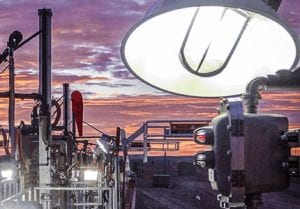Get a quote, configure a custom safety solution or ask a question. We're here to help!








- Spill ContainmentMore …Loading Safety CagesMore …
SafeRack Worldwide
We pride ourselves on one-on-one customer service. When you call SafeRack, we'll be there to answer your questions with a combined experience of 400+ years.
Select your region below.- View Products
- Railcar & Truck Loading Platforms
- Gangways & Loading Ramps
- Stairs, Platforms & Ladders
- Mobile Ladders & Platforms
- Loading Arms & Fluid Transfer
- Safety Gates & Traffic Control
- Aviation & Aerospace Access
- Marine Access & Loading
- Grounding & Monitoring
- Spill Containment
- Loading Safety Cages
- Transloaders & Skids
- Shelters & Canopies
- Fall Protection
- Terminal & Speciality
Home / Industries / Wastewater TreatmentWastewater Treatment
No two wastewater treatment plant (WWTP) safe access solutions are identical as the type of water being treated, facility size, and climate greatly affects the critical design criteria that will ensure that optimum safety and productivity can work together in harmony.
Wastewater is used water. It includes substances such as human waste, food scraps, oils, soaps, and chemicals. In homes, this includes water from sinks, showers, bathtubs, toilets, washing machines, and dishwashers. Businesses and industries also contribute their share of used water that must be cleaned. Containment of industrial spills must be in place and they must be armed with an emergency spill response plan in case something goes wrong. Like when an Alabama food company caused a massive fish kill and threatened residents with health issues because of their oversight, EPA could issue stiff penalties for Clean Water Act violations amounting up to $2 million.
We consider wastewater treatment as a water use because it is so interconnected with the other uses of water. Much of the water used by homes, industries, and businesses must be treated before it is released back to the environment.
If the term “wastewater treatment” is confusing to you, you might think of it as “sewage treatment.” Nature has an amazing ability to cope with small amounts of water wastes and pollution, but it would be overwhelmed if we didn’t treat the billions of gallons of wastewater and sewage produced every day before releasing it back to the environment. Treatment plants reduce pollutants in wastewater to a level nature can handle.

Question, Get a Quote, Live Demo or Request an On-Site Visit
Our experts simplify the complex
View Full TextWWTP Solutions
Chlorine Unloading Wastewater Sludge Loading Rack Pipe Crossover Rapid Rise Spill Containment Wastewater Filter Access Platform Prefabricated pipe rack at wastewater treatment plant Quote or discuss your installation.
Start by selecting loading application"*" indicates required fields
Below are some of the loading and unloading solutions for illustrative purposes only. Our experts will work with you and your team for a custom solution to suit your needs.
WWTP Loading Arms

Wastewater Sludge Loading Rack Sludge is typically loaded into tank trucks via 6″ carbon steel loading arms. The current best loading practice includes a vapor plate or cone with a 2″ to 3″ vapor line. Many times wastewater treatment plants are located near populated areas where vapor and odor control is required to meet EPA standards. Typical seal material for the loading arm swivel joints is PTFE, which is durable and chemical resistant.
These racks can also be designed to handle other chemicals used in water treatment facilities to meet EPA mandated discharge permits such as anti-foaming agents, pH neutralizers, coagulants, and flocculants.
WWTP Loading Gangways and Safety Cages

24″ Self-adjusting access gangways are required to safely access the varying height trucks that typically transport chemicals and waste product. Durable marine-grade aluminum and stainless steel options provide years of maintenance and corrosion-resistant service. Powered gangway solutions are also an option, with both hydraulic and pneumatic solutions being commonly used. Each gangway will be fitted with a four-rail safety cage for the tank truck hatch area. It creates a secure 4’x6′ barrier to falls while the operator (un)loads the product. These systems have engineered layouts to ensure safe access and fall protection equipment works in conjunction with the loading arms.
GX SELF-ADJUSTING STAIR (SAS) GANGWAY
SafeRack’s NEW GX SAS gangways use Retractalok power-assist technology allowing operators to raise or lower effortlessly, light as a feather to lift, solid as a rock. Tested in the most critical applications, this revolutionary new gangway outperforms all others. Available in multiple lengths and widths.
WWTP Eye Wash/Drench Showers

ANSI guidelines state that an Eye Wash/Drench Showers need to be located 10 seconds or 55’ (16.8m) from contaminants or hazardous materials. Eyewash stations need to be on the same horizontal plane with no obstructions.
Therefore, we would propose the installation of a standard combination Drench Shower/Eyewash Unit, which will save limited space and fit easily into any work environment.
WWTP Spill Containment

Spill containment pans will be provided at the point of loading operations and is an essential piece of equipment in overall site safety and environmental protection WWTP Piperacks

Because wastewater treatment plants have pipe runs throughout the facility, ErectaRack pipe racks are pre-fabricated for a variety of pipe dimensions and applications. Because they’re pre-engineered, ErectaRack skips the long engineering and fabrication process, saving weeks, if not months in the installation process.
WWTP Grounding

While not highly flammable, high airborne concentrations of certain products and chemicals can be ignited and pose a significant fire and explosion hazard, especially in confined spaces. Industry best practice includes the grounding of all vessels prior to starting the (un)loading process. - Vehicle grounding and bonding — ensure true grounding before product flow is permitted
Safety Gates for WWTP Stair, Ladder, and Platform Applications

Safety Gates will be installed at the top of stairs and any other openings to ensure operator safety at all times.  YellowGate Safety Gates
YellowGate Safety GatesSafeRack’s line of industrial safety gates is the most flexible product on the market with the ability to span openings between 16” and 36” and is field adjustable with nothing more than a wrench. We also have guardrails, metal handrails, and full-fledged fall protection solutions with customizable options to fit your needs.
WWTP Loading Platform Options

- Lighting – General exterior and task lighting to illuminate work and walk areas.
- Platform & Canopies – Full platform canopies reduce exposure to the elements and improve the safe and productive loading operation from the operator’s perspective.
- Operator Shelter – Depending on your site requirements, consideration should be given to the requirement of an operator or guard building to keep personnel out of the elements. This can be customized to meet specific site requirements.
- Wheel Chocks – SPCC options to allow for safe access and storage of water treatment chemicals.
Personal Protective Equipment PPE Requirements
Eye/Face Protection: Wear chemical safety goggles. A face shield (with safety goggles) may also be necessary.
Skin Protection: Wear chemical protective clothing e.g. gloves, aprons, boots. Coveralls or long sleeve shirts and pants in some operations. Wear a chemical protective, full-body encapsulating suit, and self-contained breathing apparatus (SCBA). Suitable materials include: butyl rubber, neoprene rubber, Viton®, Viton®/butyl rubber, Barrier® – PE/PA/PE, Silver Shield® – PE/EVAL/PE, Trellchem® HPS, Trellchem® VPS, Saranex®™, Tychem® BR/LV, Tychem® Responder® CSM, Tychem® TK. The following materials should NOT be used: natural rubber, polyvinyl chloride. Recommendations are NOT valid for very thin neoprene rubber gloves (0.3 mm or less).
Respiratory Protection: Up to 5 ppm:
(APF = 10) Any chemical cartridge respirator with cartridge(s) providing protection against chlorine*; or Any supplied-air respirator*.
*Reported to cause eye irritation or damage; may require eye protection.
APF = Assigned Protection Factor
Recommendations apply only to National Institute for Occupational Safety and Health (NIOSH) approved respirators. Refer to the NIOSH pocket guide to chemical hazards for more information.
Use local exhaust ventilation and enclosure, if necessary, to control the amount in the air. Consider using a corrosion-resistant exhaust ventilation system separate from other ventilation systems. Using stringent control measures such as process enclosure may be necessary to prevent product release into the workplace. Use backup controls (e.g. double mechanical pump seals) to prevent the release of this material due to equipment failure. * For illustrative purposes only. Our experts will work with you and your team for a custom solution to suit your needs 
From the heart of Bradenton, Florida, we bring you a pivotal moment in Manatee County’s relentless journey toward sustainable progress. Our partners at Westra Construction are working hard, setting the stage for a monumental upgrade/expansion of a local water treatment plant. The task at hand? Transforming water from an old phosphate mine into a resource all part of the ongoing commitment to leverage every opportunity for our communities’ well-being.
View Full Profile10 Minute Tips: Wastewater Treatment Safety Reminders
Take 10 minutes and learn tips that will help you maximize the safety of your wastewater treatment operations.
Wastewater treatment plants are among the most hazardous places to work.
In addition to navigating risks associated with heavy equipment, workers are regularly at risk for slips and falls, as well as exposure to toxic chemicals and other chemicals. These hazards can result in everything from minor injuries and serious illnesses, to blindness and even death.
With these hazards in mind, it is critical for wastewater treatment plants to implement comprehensive strategies to promote, ensure, and maintain safety.
Here are the five main areas of concern regarding water treatment facility safety:
Floor and Platform Hazard Prevention
The enormous amount of water involved in the treatment process makes slips, trips, and falls the leading hazards for wastewater treatment workers. These incidents can lead to everything from sprains and strains to scrapes and fractures — and worse.
In order to decrease the chances of any slips, trips, or falls, it’s important to identify and mark any areas that are prone to excessive water and puddling. Fix all leaks promptly, and be sure to sweep up or squeegee any puddles. Use non-slip flooring surfaces, traction tape, and require all employees to wear shoes with non-slip soles. Workers should also consider wearing fall protection gear.
You can further enhance your facility’s floor and platform safety with the following equipment:
- General exterior and task lighting are helpful for illuminating work and walk areas.
- Operator/guard buildings and full platform canopies reduce workers’ exposure to the elements. Canopies also make loading safer and more productive for operators.
- Crossover helps your employees navigate piping, while work platforms give them access to mechanicals.
- Loading gangways let workers safely access the varying height trucks that typically transport chemicals and waste products. They can be fitted with safety cages that protect operators from falls during unloading.
Engulfment and/or Drowning Prevention
The pools at your wastewater treatment plant are the last kind of pools anyone wants to fall into. Accidents can happen, however.
The non-slip measures mentioned above must be used around all vats on all catwalks. Guardrails should be installed around all open water sources, and all handrails should be strong enough to prevent falls.
When working in unguarded areas, employees should be monitored by coworkers. They must also wear fall protection when 6 feet (or more) above the ground or at a lower level.
Before lifting grates and loading ramps over waterways and tanks to allow employee access, block off the area, and place hazard warning signs. Keep rescue gear like flotation devices and hooks readily available near all tanks.
Confined-Space Hazard Mitigation
Not designed for continuous work, confined spaces can pose serious safety concerns at treatment facilities.
Exposure to a low-oxygen environment or high levels of hydrogen sulfide, methane gas, or ammonia can result in serious illness or death. While not highly flammable, high airborne concentrations of certain products and chemicals can be ignited and pose a significant fire and explosion hazard, especially in confined spaces. Industry best practices include the grounding of all vessels prior to starting the (un)loading process.
Employees should follow OSHA requirements for restricted exit and entry regarding confined spaces. Warnings must be prominently displayed in all hazard zones, and barricades are recommended for preventing unauthorized access. Employees who access confined spaces should wear personal protective equipment (PPE) and ambient air and personal monitoring to ensure their safety.
Survey your entire facility for areas with limited egress and other hazard potential, as well as areas for explosion potential from flammable gas and water engulfment during heavy rain and flooding.
Equipment Maintenance
Maintaining your machinery is mandatory, and should be done before there’s a problem. Doing so reduces the lost production time and safety hazards that can arise when your equipment malfunctions or breaks down.
Organization and planning are key when it comes to proper maintenance. Make sure all pipes and electrical systems are labeled properly, including intake and outlet pipes, as well as any equipment that can present an electrical flash hazard.
All employees performing repairs near live equipment must have the proper tools and protective gear and know how to use them.
Chemical and Biohazard Handling
Chemicals and biological hazards pose some of the biggest threats to employee safety at your facility. Employees who aren’t protected from exposure can become ill.
Employees should wash hands frequently with antibacterial soap, making sure that any open cuts or abrasions are properly covered and protected. They should also change out of their work clothes before going home in order to avoid contamination.
Despite the best planning and procedures, accidents can still happen. With that in mind, no treatment facility should be without a standard combination drench shower/eyewash unit.
Safety data sheets (SDS) provide guidance regarding the properties, exposure limits, suggested PPE, and emergency actions for the treatment of chemicals in use.
When used with an oxidizer like hydrogen peroxide, the Ultra-S3 oxidizing system provides a cost-effective method of eliminating the smell emitted by hydrogen sulfide gas, keeping the gas at acceptable levels, and limiting the costly deterioration and corrosion it causes to facility infrastructure.
Wheel chocks allow for safe access to and storage of treatment chemicals, while spill containment pans utilized at the point of loading operations serve as an essential safety and environmental protection tools.
Effects of wastewater pollutants
If wastewater is not properly treated, then the environment and human health can be negatively impacted. These impacts can include harm to fish and wildlife populations, oxygen depletion, beach closures, aquifer contamination, and other restrictions on recreational water use, restrictions on fish and shellfish harvesting, and contamination of drinking water. Environment Canada provides some examples of pollutants that can be found in wastewater and the potentially harmful effects these substances can have on ecosystems and human health:
- Decaying organic matter and debris can use up the dissolved oxygen in a lake so fish and other aquatic biotas cannot survive;
- Excessive nutrients, such as phosphorus and nitrogen (including ammonia), can cause eutrophication, or over-fertilization of receiving waters, which can be toxic to aquatic organisms, promote excessive plant growth, reduce available oxygen, harm spawning grounds, alter habitat and lead to a decline in certain species;
- Chlorine compounds and inorganic chloramines can be toxic to aquatic invertebrates, algae, and fish;
- Bacteria, viruses, and disease-causing pathogens can pollute beaches and contaminate shellfish populations, leading to restrictions on human recreation, drinking water consumption, and shellfish consumption;
- Metals, such as mercury, lead, cadmium, chromium, and arsenic can have acute and chronic toxic effects on species.
- Other substances such as some pharmaceutical and personal care products, primarily entering the environment in wastewater effluents, may also pose threats to human health, aquatic life, and wildlife.
Wastewater treatment
The major aim of wastewater treatment is to remove as much of the suspended solids as possible before the remaining water, called effluent, is discharged back to the environment. As solid material decays, it uses up oxygen, which is needed by the plants and animals living in the water.
“Primary treatment” removes about 60 percent of suspended solids from wastewater. This treatment also involves aerating (stirring up) the wastewater, to put oxygen back in. Secondary treatment removes more than 90 percent of suspended solids.

Saferack installed durable top-loading gangways in a North Carolina wastewater treatment plant Steps in the wastewater treatment process
1. Screening
Wastewater entering the treatment plant includes items like wood, rocks, and even dead animals. Unless they are removed, they could cause problems later in the treatment process. Most of these materials are sent to a landfill.
2. Pumping
The wastewater system relies on the force of gravity to move sewage from your home to the treatment plant. So wastewater-treatment plants are located on low ground, often near a river into which treated water can be released. If the plant is built above the ground level, the wastewater has to be pumped up to the aeration tanks (item 3 in WWTP diagram above). From here on, gravity takes over to move the wastewater through the treatment process.
3. Aerating
One of the first steps that a water treatment facility can do is to just shake up the sewage and expose it to air. This causes some of the dissolved gases (such as hydrogen sulfide, which smells like rotten eggs) that taste and smells bad to be released from the water. Wastewater enters a series of long, parallel concrete tanks. Each tank is divided into two sections. In the first section, air is pumped through the water.
As organic matter decays, it uses up oxygen. Aeration replenishes the oxygen. Bubbling oxygen through the water also keeps the organic material suspended while it forces ‘grit’ (coffee grounds, sand, and other small, dense particles) to settle out. Grit is pumped out of the tanks and taken to landfills.
4. Removing sludge
Wastewater then enters the second section or sedimentation tanks. Here, the sludge (the organic portion of the sewage) settles out of the wastewater and is pumped out of the tanks. Some of the water is removed in a step called thickening and then the sludge is processed in large tanks called digesters.
5. Removing scum
As sludge is settling to the bottom of the sedimentation tanks, lighter materials are floating to the surface. This ‘scum’ includes grease, oils, plastics, and soap. Slow-moving rakes skim the scum off the surface of the wastewater. Scum is thickened and pumped to the digesters along with the sludge.
Many cities also use filtration in sewage treatment. After the solids are removed, the liquid sewage is filtered through a substance, usually sand, by the action of gravity. This method gets rid of almost all bacteria, reduces turbidity and color, removes odors, reduces the amount of iron, and removes most other solid particles that remained in the water. Water is sometimes filtered through carbon particles, which removes organic particles. This method is used in some homes, too.
6. Killing bacteria
Finally, the wastewater flows into a ‘chlorine contact’ tank, where the chemical chlorine is added to kill bacteria, which could pose a health risk, just as is done in swimming pools. The chlorine is mostly eliminated as the bacteria are destroyed, but sometimes it must be neutralized by adding other chemicals. This protects fish and other marine organisms, which can be harmed by the smallest amounts of chlorine.
The treated water (called effluent) is then discharged to a local river or the ocean.
Customer Reviews
 5 5Faster hook up and disconnect.
5 5Faster hook up and disconnect.We plan to use the product for reduced air emissions and faster hook up and disconnect.
By Resin Manufacturing Engineer from Xerox Corporation on 4/29/15 5 5Highly responsive.
5 5Highly responsive.The sales team was very easy to deal with, fast response and friendly. It was easy to install and looked good and size we needed was in stock. We only had a positive experience dealing with the company.
By Michele David from Croda Inc. on 11/26/18 5 5Plant operations was happy with the ladder after they used it.
5 5Plant operations was happy with the ladder after they used it.Plant operations was happy with the ladder after they used it. We like the lightweight safety cage/easy access and minimal maintenance.
By Bob Whitlatch from Kraton Polymers U.S. LLC on 1/27/12 5 5Custom made to fit our needs.
5 5Custom made to fit our needs.Well built – heavy duty, but very easy to move. Custom made to fit our needs, and good customer service from John Edwards. Timing, and a quick turn around was key.
By Doug Johnson from Westlake Longview Corporation on 12/9/134 5Helped get me out of a jam!I like the railcar mover because it was not some little tool to work with, the size of the handle and the head make it easy to move cars. Follow-up on the order and quick delivery helped get me out of a jam! Thanks.
By Operations Manager from Coal Facility in West Virginia on 1/4/11 5 5Re-affirmed SafeRack quality.
5 5Re-affirmed SafeRack quality.Product was delivered slightly ahead of schedule. When we found that aluminum shaft rings were not holding up, SafeRack was quick to produce stainless steel parts to keep our racks in service, re-affirming SafeRack fall prevention system quality.
By Greg Vastbinder from NuStar Energy on 2/7/14

Quick Quote 866-761-7225
LET US DESIGN YOUR SOLUTION TODAY
Our innovative tools provide 3D visualizations and accurate quotes in minutes.
Get Help NowOrder Now 866-761-7225
Questions or Need a Quote?
Chat live with a knowledgeable and friendly safety expert now.

Bob Kashtan
Located in South Carolina

Joey Robinson
Located in South Carolina

Caelin Lacy
Located in South Carolina

Katie Kelly
Located in South Carolina

Amber Graham
Located in South Carolina




















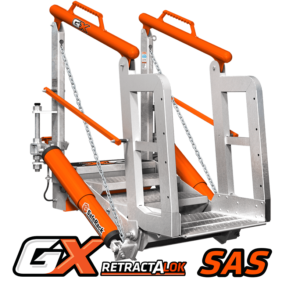
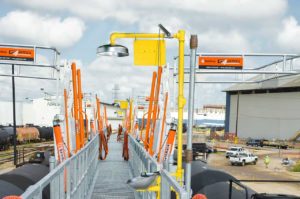
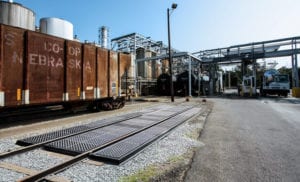

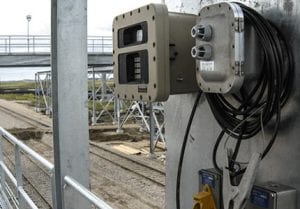
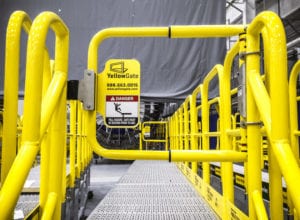
 YellowGate Safety Gates
YellowGate Safety Gates